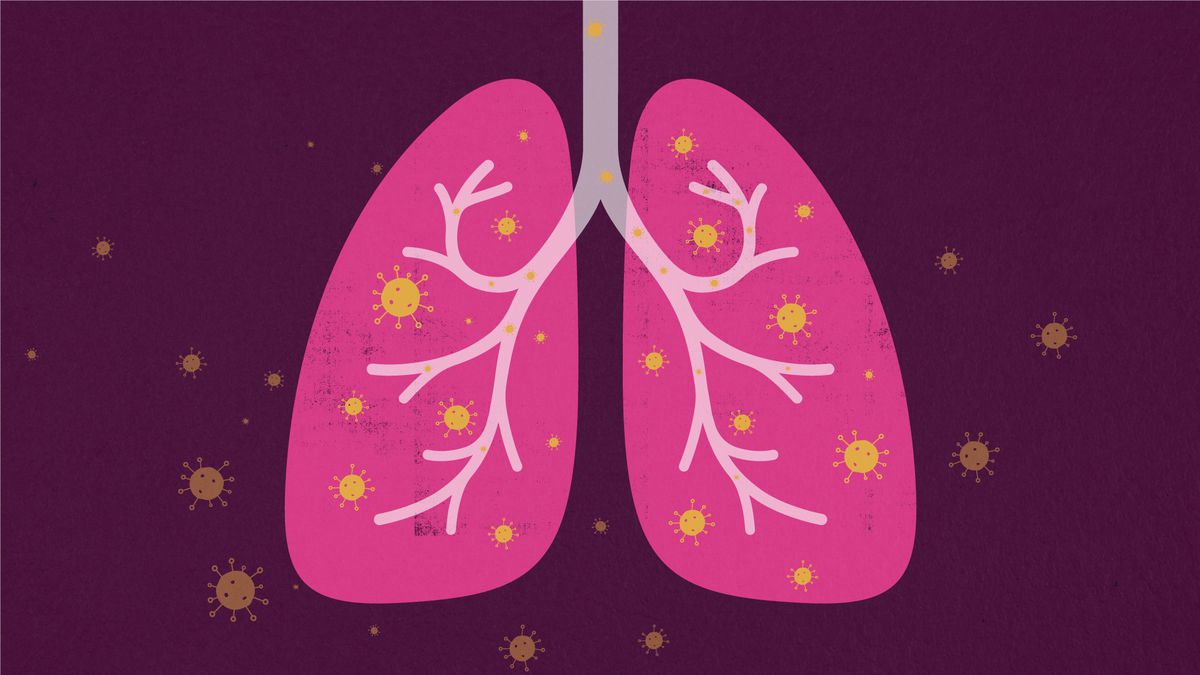
The U.S. death toll from the coronavirus pandemic has topped 156,000 as the number of people hospitalized with COVID-19 soared in July by nearly 50%. There are now over 5 million confirmed cases in the US with California, Florida and Texas each reaching over 500,000 confirmed cases, nearly double the cases reported in New York City, the former leading epicenter of the pandemic in the US. Nearly half of the US confirmed cases have recovered.
The Centers for Disease Control and Prevention (CDC) said that a significant number of COVID-19 patients do not recover quickly, and instead experience ongoing symptoms, such as fatigue and cough. Eight months into the global pandemic, we’re still measuring its effects only in deaths. Non-hospitalized cases are termed ‘mild’ and are largely not followed up. Recovery is implied by discharge from hospital or testing negative for the virus so ongoing ill health in those classed as ‘recovered’ is going largely unmeasured as the focused has mainly been on slowing the infection rate.
Research that follows COVID patients after discharge from hospital is starting but there is still a gap in quantifying and characterizing COVID-related illness in those not hospitalized. The few studies on those who have recovered indicate that previously healthy people with persistent symptoms such as chest heaviness, breathlessness, muscle pains, palpitations and fatigue, which prevent them from resuming work or physical or caring activities, are still classed under the umbrella of ‘mild COVID’. As many as a third of patients who were never sick enough to be hospitalized are not back to their usual health up to three weeks after their diagnosis. Many with long-term symptoms are otherwise young and healthy. Among those surveyed between ages 18 and 34, about 20 percent experienced lasting symptoms.
Among the patients who experienced lasting symptoms in a CDC report, 71 percent reported fatigue, 61 percent had lasting cough, and 61 percent reported ongoing headaches. Although clinicians and researchers have an idea of who is at increased risk of dying from COVID, we don’t know who is more likely to experience prolonged ill health following symptomatic, or even asymptomatic, infection. The CDC still states that preventative measures, such as physical distancing, face masks and frequent hand-washing, continue to be important to slow the spread of COVID-19. They warn that worldwide, millions of those still alive who got ill without being tested or hospitalized are simply not being counted.
The World Health Organization reports cases are now doubling every six weeks. The United States, Brazil, and the United Kingdom have been among the countries hardest hit by the pandemic. The global death toll from the coronavirus has surpassed 700,000, with nearly 19 million confirmed cases, as the pandemic continues to accelerate. During the month of July, more than 8 million people tested positive — almost as many as in the first six months of the pandemic combined. Nearly 12 million of those confirmed cases have recovered.
The top White House coronavirus adviser Deborah Birx has warned the country has entered a new phase in its fight against the pandemic. A new model by the Institute for Health Metrics and Evaluation suggests the U.S. coronavirus death toll is on pace to reach nearly 300,000 by December. The institute projects 66,000 lives could be saved if 95% of people in the United States wear face coverings. The U.S. death toll currently stands at the highest total in the world.
Read more
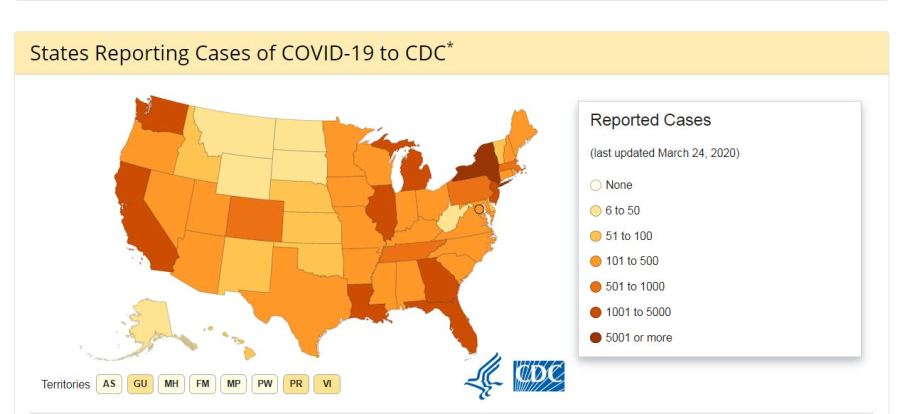
There have been over 15 million confirmed coronavirus cases around the world with 618,000 deaths. Of those cases 8,500,000 have recovered. In the US there are over 4 million confirmed cases and over 145,000 have died in the 6 months since the first case was confirmed in the US. Almost 8,500,000 of the US cases have recovered. The United States has set another grim record for coronavirus infections, with more than 75,600 new cases confirmed. At least 11 states are reporting record hospitalizations, with nearly 1,000 new deaths in just 24 hours. Officials in Texas and Arizona have put out calls for refrigerated trucks, as morgues overflow with the bodies of COVID-19 patients. Texas and Florida both reported their highest death tolls of the pandemic.
As the number of new global coronavirus cases reaches record highs, the World Health Organization is warning the coronavirus outbreak will continue to worsen if governments don’t take basic public health measures. Reports the number of coronavirus deaths in Latin America has now exceeded the death toll in the United States and Canada. Researchers estimate the US will have 219,864 total Covid-19 deaths by November 1, according to the Institute for Health Metrics at the University of Washington.
In Florida, confirmed coronavirus cases topped 300,000 even as Disney World completed a phased reopening of its Orlando theme parks. Nearly 50 Florida hospitals said they were out of ICU beds. In Miami, hospitals have run out of regular intensive care beds, with new patients moved into converted ICUs. Governor Ron DeSantis said he was mobilizing 1,000 medical workers to fill critical staffing shortages.
California, the most populous state and the first to shut down months ago, appeared to have Covid-19 under control — only to suffer a massive resurgence and surpass New York with the most coronavirus cases in the nation. California, which now has 417,000 confirmed cases due to the recent spikes, is largely shutting down again. California Governor Gavin Newsom has a plan to halt the recent surge by ordering all indoor restaurants, wineries, movie theaters and museums to be closed again. Bars have been ordered to cease all operations. Indoor businesses have been shuttered in many areas. Newsom said the new shutdowns are needed to address the public health crisis. The Los Angeles and San Diego school districts have announced that all classes will be conducted online at the start of the school year due to the pandemic.
Covid-19 is set to become one of the leading causes of death in Los Angeles County, according to Barbara Ferrer, the county’s health director. “It’s killing more people than Alzheimer’s disease, other kinds of heart disease, stroke and COPD,” Ferrer said. Comparing Covid-19 to the flu, Ferrer said data shows Covid-19 killed twice as many people in six months as the flu did in eight months.
The city of Atlanta announced a similar plan. In New York, Governor Andrew Cuomo said schools will be allowed to reopen, but only in regions with low daily infection rates. At least 41 states have some kind of mask requirement in place or planned. In Colorado, Governor Jared Polis issued a statewide mask mandate, a week after refusing public health officials’ pleas to require facial coverings in public. Arkansas Republican Governor Asa Hutchinson issued a similar mask mandate. The CDC reports that 10 states have reported 10,000 new cases while three states each reported over 60,000 new cases in the last week.
Several vaccine trials are progressing well, and researchers say a vaccine might be publicly available by early 2021. Health and Human Services Secretary Alex Azar said any Covid-19 vaccine that’s sponsored by the US government will be free or affordable for the American public.
Read more

The World Health Organization is warning “the worst is yet to come” as countries across the globe are experiencing new spikes, with some putting the brakes on reopening. The pandemic is the worst in the Americas, where the number of COVID-19 deaths are projected to nearly triple to 627,000 by October 1. Coronavirus cases have now surpassed 11 million worldwide, with over a half-million deaths. Cases continue to surge across much of the United States, where confirmed cases have now topped 2.8 million, with over 128,000 reported deaths — that’s one-quarter of the world’s cases and deaths, though the U.S. has just over 4% of the global population.
Spikes are being reported in 36 states. Only two states — Connecticut and Rhode Island — saw a decline in new cases compared to the previous week. The United States has set another grim coronavirus record, confirming nearly 52,000 cases of COVID-19 in just 24 hours. Alaska, Arizona, California, Georgia, Idaho, Oklahoma, South Carolina, Tennessee and Texas all reported single-day record levels of the disease with hospitals in some regions already overwhelmed with patients.
At least a dozen states have “paused” their reopening. In California, Governor Gavin Newsom ordered bars in seven counties, including Los Angeles, to close. The governors of Florida and Texas have ordered bars to close, among other restrictions, in an attempt to curb the surge in cases. A major hospital system in Houston reportedly stopped disclosing COVID-19 data after its ICU capacity hit 100%, and following conversations with Governor Greg Abbott in which he expressed concern over negative headlines. Both governors are refusing to impose statewide stay-at-home orders and mandate the wearing of face masks.
More states around the country are imposing new measures and rolling back their reopening as coronavirus cases continue to surge. The governors of Oregon and Kansas are mandating face masks for residents. Jacksonville, Florida, also said it will make face coverings mandatory. Seven cities in Texas say they will impose orders mandating face masks. Meanwhile, hospitals in Texas report a dire situation as cases surge.
Meanwhile, beaches in Los Angeles, as well as several Florida counties, were closed for Fourth of July weekend. Despite skyrocketing cases, crowds still packed many of the open beaches in coastal cities for the Fourth of July holiday weekend, sparking further fears of new spikes.
Officials in Texas, Florida and Arizona say the states’ early reopenings helped fuel the explosion in cases. In California, Governor Gavin Newsom reimposed coronavirus restrictions, shutting down bars and indoor dining in 19 counties that are home to more than 70% of California’s population. In Arizona, Governor Doug Ducey ordered bars, gyms, movie theaters and water parks closed for at least 30 days amid an exponential rise in new infections. New York City has also halted plans to reopen indoor dining at restaurants. New York, New Jersey and Connecticut have ordered travelers from 16 states with high infection rates to self-quarantine upon their arrival.
Read more

Physicians caution that amid a desire to put an end to the Covid-19 pandemic, developers of drugs and vaccines have become overly enthusiastic about the chances their products will work. Several vaccine developers have issued statements looking into the future — setting possible timetables for study completion and vaccine manufacturing.
Biotech company Moderna said early trials of their coronavirus vaccine show promising results as volunteers developed antibodies against the virus. Eight people took part in the study. The company, which is developing the vaccine with the National Institutes of Health, says it will move on to larger-scale trials and that a vaccine could be made available as soon as January. Moderna is collaborating on its vaccine development with the National Institute of Allergy and Infectious Diseases. Dr. Anthony Fauci, the director of NIAID, said while Moderna’s numbers were limited, “it was good news” and he was “cautiously optimistic” about the vaccine.
According to the World Health Organization (WHO), there are currently over 100 vaccine efforts underway around the world. There are 10 vaccines in human clinical trials worldwide. There are four teams in the United States: Moderna, Pfizer, Inovio and Novavax. Five Chinese companies have vaccines in human trials. University of Oxford is the only team in Europe currently running trials. Inovio and Moderna have said they expect their large-scale clinical trials, known as Phase 3 trials, to last around six months. Pfizer hasn’t given a timetable for its Phase 3 trial. Worldwide, there are 114 more candidates in pre-clinical trial stages.
One big stumbling block for any vaccine trial is that Covid-19 infection rates in many areas of the world are flattening out or declining. The point of Phase 3 is to vaccinate people and then see if they naturally become infected, and with lower rates of circulating virus, the study subjects are less likely to be exposed to the virus in the first place. For a vaccine clinical trial to be successful, there needs to be sufficiently high levels of the virus circulating in the community. If there isn’t enough virus around, it will be impossible to tell if the vaccine protected the study subjects, or if they were just never exposed to the virus.
The global effort to develop a vaccine is just the beginning of this race. It also takes time to ramp up vaccine production and deciding how it will be distributed will be difficult in a world of more than 7 billion people. New drugs and vaccines traditionally go first to the wealthiest countries and that’s the expectation in this case as well. But the exact order could depend on where the vaccine is first developed and what that countries priorities are in distribution. Wealthier countries have been hit hardest by the virus so far. But in many of these nations, COVID-19 cases are leveling off or declining, while they are rising rapidly in the developing world, including countries such as India, Brazil and Peru. Nations and drug companies are likely to face a range of conflicting pressures with the need to provide the vaccine at home and intense scrutiny to share it widely, fairly and cheaply abroad.
Read more
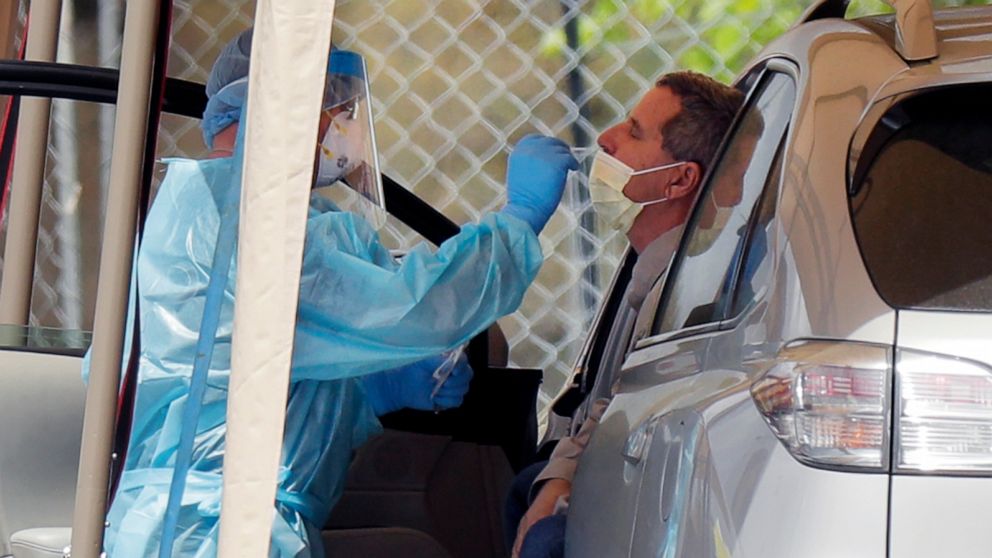
As many states slowly reopen, a pair of studies predict the COVID-19 outbreak is set to become far deadlier in the United States. A draft Federal Emergency Management Agency report forecasts that daily coronavirus deaths in the United States would rise to 3,000 people a day by June 1 — that’s a 70% increase over the current figure. Separately, the Institute for Health Metrics and Evaluation at the University of Washington estimates the U.S. death toll will reach around 135,000 by August in the United States.
The U.S. death toll from the coronavirus outbreak has topped 75,000 and is projected to keep rising in the coming weeks. The official coronavirus death toll worldwide has topped a quarter of a million, with over 3.6 million confirmed cases. The United States makes up close to one-third of confirmed cases and a quarter of known deaths, even though it represents less than 5% of the world’s population.
Over half of U.S. states have relaxed, or are preparing to loosen, social distancing and other restrictions but it has not been a smooth transition. In Georgia, more than 120 Atlanta restaurants have refused to open, saying it is not safe to do so despite Georgia Governor Brian Kemp’s lifting of the state’s shelter-in-place order. In Miami Beach, the governor had to close a popular park — just five days after reopening it — after thousands failed to adhere to new rules requiring social distancing and wearing a face mask.
Meanwhile, we continue to learn more about the virus globally as scientists and doctors try to create a vaccine. A French hospital says they treated a COVID-19 patient as early as December — a month before the government confirmed its first cases. A preliminary new study finds the novel coronavirus that first emerged in China mutated in Europe in February to become more contagious, speeding its spread around the globe. The authors of the study said they released their findings early so that people working on vaccines could see their results.
US Researchers say the novel coronavirus silently spread in the United States earlier than previously thought as well, infecting tens of thousands of people in New York and other major cities before the first US case was confirmed on January 21. A new model by the Network Science Institute at Northeastern University in Boston shows the first infections came from China in early or mid-January, and that the virus went undetected because many people were not presenting symptoms or were misdiagnosed because US doctors had not seen the virus first hand yet.
The model suggests that while Americans were still focused on China, about 28,000 people in major cities — such as New York, San Francisco and Seattle — were infected by March 1. Santa Clara County officials announced that tissue samples confirmed two people who died in early February tested positive for coronavirus. That month, a number of physicians saw patients, without travel histories, who had flu-like symptoms.
Several states, including California and Indiana, have been retracing their coronavirus timelines after discovering that the highly infectious disease started killing people earlier than previously known. These discoveries have emphasized just how much about this pandemic remains unknown. Four months since the novel coronavirus was first discovered in Wuhan, China, experts worldwide still do not fully understand how the virus started, how it impacts the body or what treatments are effective.
Read more

The coronavirus pandemic continues in almost every corner of the globe, with the number of confirmed COVID-19 cases worldwide surpassing 1 million people — though the true number is certain to be far higher due to a critical lack of testing globally. The largest number of cases is in the United States with over 350,000 confirmed. Over 10,000 people in the US have died of Covid-19 as the virus continues to spread.
In Europe, COVID-19 has pushed hospitals across the continent past their breaking points. Spain has reported over 120,000 cases and their death toll topped 10,000. In the U.K., London’s ExCeL convention center has been converted into an enormous field hospital with plans to treat up to 4,000 COVID-19 patients. Over 2,300 people have died from the disease across the U.K.
In Italy, there are over 100,000 confirmed cases and their COVID-19 deaths have topped 15,000. It’s been reported that Italy’s true toll is far higher because the country can’t spare the resources to test every dead body. U.S. Vice President Mike Pence said models predict the United States faces a trajectory of COVID-19 deaths similar to Italy’s. The computer model used by the White House projects close to 82,000 COVID-19 deaths in the United States by August 4, assuming the country implements full social distancing until the end of May.
The 81,766-death projection is a slightly less grim figure than the 93,531 cited earlier by the administration. The model projects that the country may need fewer hospital beds, ventilators and other equipment than previously estimated, and that some states may reach their peak of COVID-19 deaths sooner than expected. Not all states are using the federal government’s forecasting model.
While the White House projects that coronavirus cases in the nation’s capital would peak later this month, the local Washington, DC government is relying on a different computer model that says it won’t peak until late June or early July. Health experts warn against early optimism and say it’s best to prepare for worst case scenarios.
Experts say that pandemic modelling is almost never precise and the Covid-19 pandemic, the uncertainty in the projections is because of lack of access to good data coupled with the fact that we just don’t know enough about the coronavirus. Another factor that adds to the uncertainty is how people will behave and what kinds of policies will be enacted to change contact patterns in the weeks and months ahead. The ranges estimated really depends on how much people actually adhere to social distancing policies and how quickly these policies are issued.
Read more
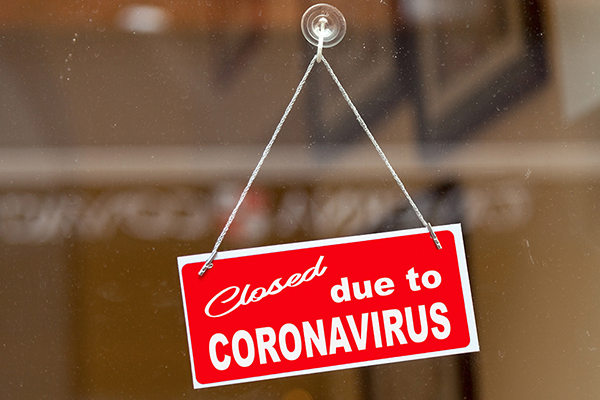
At least 24 states have enacted policies to close nonessential businesses in an effort to slow the spread of Covid-19 in the United States. While guidance varies from state to state, recreational spaces like museums, movie theaters, gyms, day cares, music venues and malls, as well as personal care retailers like spas, nail and hair salons, tend to fall in the nonessential businesses category.
The states with nonessential business shut-downs are Washington, California, Oregon, Nevada, New Mexico, Oklahoma, Louisiana, Illinois, Kentucky, Indiana, Wisconsin, Minnesota, Ohio, West Virginia, Virginia, Pennsylvania, New York, Vermont, Massachusetts, Connecticut, New Jersey, Delaware and Maryland. Other states like Missouri and Kansas have shut down orders in certain counties.
Shuttering nonessential businesses resulted in tens of thousands of American workers losing their jobs in recent weeks. In New York and New Jersey, so many people filed for unemployment insurance over the past week that both states’ online systems crashed. While guidance varies from state to state, recreational spaces like museums, movie theaters, gyms, day cares, music venues and malls, as well as personal care retailers like spas, nail and hair salons, tend to fall in the nonessential businesses category.
In New York, where Gov. Andrew Cuomo on Tuesday warned that the “rate of new infections is doubling about every three days,” essential businesses that remain open include health care facilities, infrastructure and manufacturing entities and essential services like trash collection, law enforcement and homeless shelters. Bars and restaurants can only offer take-out or delivery.
Read more
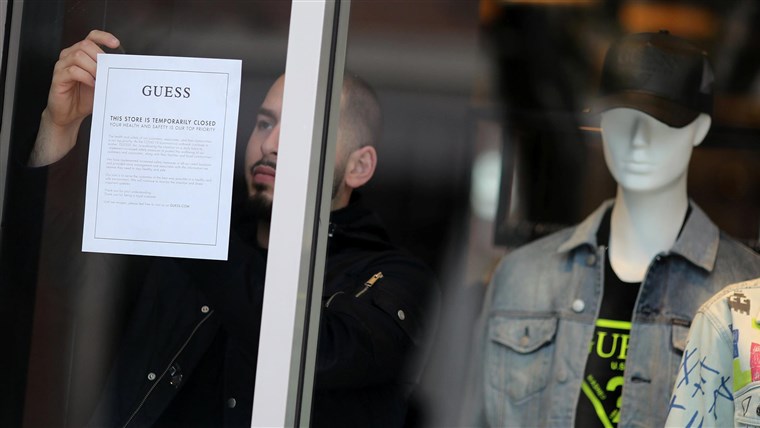
As concerns about the coronavirus rippled across the globe, the US president declared the Covid-19 outbreak a national emergency as public life in America continues to grind to a halt. Schools have closed to millions of students, creating anxiety for working parents across the country. Travel bans have been widened and some cities across America have issued curfews or “shelter in place” orders to slow the spread of the virus. More “shelter in place” orders are expected as the number of confirmed cases continues to rise and has now been found in all 50 states.
Shelter in place orders will come from local government rather than federal. A growing number of countries have also imposed lockdowns that effectively shut down public life, but the details of such lockdowns vary dramatically. Italy banned all public gatherings and set a 6 p.m. curfew but allowed travel for work or health reasons, while in China, millions of residents are restricted from even going to shop for groceries.
The “shelter-in-place” order that San Francisco adopted has fairly large exemptions for health, work, food and even exercise. City officials ordered residents to remain in place at their homes except for essential activities, essential business, and essential government functions, including tasks essential to maintain health and safety, such as obtaining medicine or seeing a doctor or getting necessary services or supplies for themselves or their family or household members, such as getting food and supplies, pet food and supplies necessary for staying at home.
The order also includes:
- Engaging in outdoor activity, such as walking, hiking or running provided that they maintain at least 6 feet of social distancing.
- Caring for a family member in another household.
- Caring for elderly, minors, dependents, people with disabilities or other vulnerable persons.
Treasury Secretary Steven Mnuchin outlined a variety of potential proposals to Senate Republicans as part of a legislative package to help Americans and industries that are reeling from the coronavirus. The administration proposed an initial $250 billion could be sent to Americans as early as the end of April if it can muster congressional approval.
Sen. John Thune noted that getting cash assistance to Americans is something that has historically taken some time, but “I think there are ways now electronically that you can process things more quickly.” The proposal has fairly widespread support from Senate Republicans, who say it will offer immediate assistance to Americans impacted by the virus. Some lawmakers have varying ideas about how the proposal should work, including who should receive the payments and how much each American should get.
Read more

The World Health Organization is warning the number of cases of COVID-19 caused by coronavirus is approaching 100,000 worldwide, with more than 3,100 deaths due to the illness. Most of the deaths and infections have occurred in China, where health officials reported 139 new cases and 31 new deaths recently.
South Korea confirmed 438 new cases, making their total number of confirmed cases over 5,700. Italy has over 3,000 confirmed cases and more than 100 deaths have been reported. Officials have closed down schools in Italy, South Korea, Japan, France, Pakistan, Iran and elsewhere, with nearly 300 million children kept home from school worldwide.
In the United States, there are now more than 300 confirmed cases and the death toll has reached 11 — with 10 of the deaths occurring in Washington state. California recorded its first coronavirus death: an elderly man who traveled on a Princess cruise ship that departed from San Francisco and traveled to Mexico in February. Governor Gavin Newsom has ordered the ship quarantined off the coast of California and is airlifting tests for passengers and crew. Governor Newsom made the announcement as he formally declared a state of emergency across California.
The CDC issued new guidance for clinicians on screening patients for novel coronavirus and assessing their risk for infection. The agency also started shipping its coronavirus assay to labs across the U.S. and in other countries. According to the US Centers for Disease Control and Prevention, 13 states in the US have reported confirmed or presumptive positive cases of COVID-19. Washington State has the highest number of cases with 70 confirmed illnesses and 10 associated deaths. California has 60 positive cases and 1 death.
Of the confirmed cases in California, 42 of them are linked to repatriation or international travel. Cases are rising rapidly in New York, where there are 22 confirmed cases across the state with an additional 24 testing results pending, and 122 individuals under investigation. In response to the rise in cases, the US Senate passed an $8.3 billion bill to fight the outbreak. This came just a day after the bill was approved by the House of Representatives. More than $3 billion is expected to be put into research and development of treatments, vaccines, and testing.
Read more
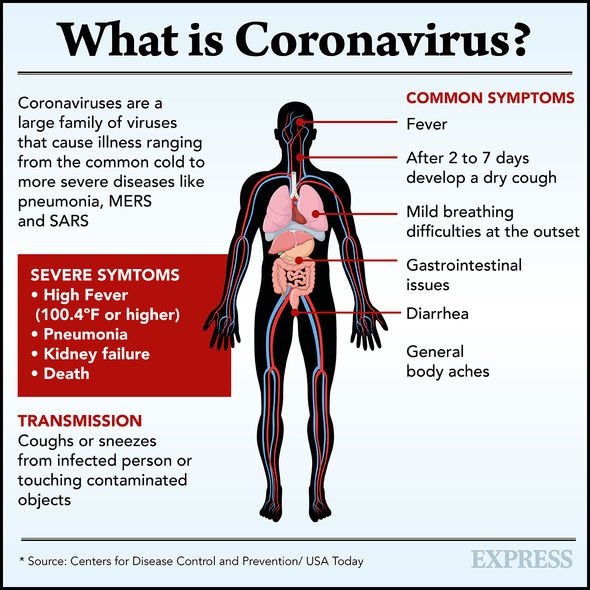
The death toll from Coronavirus (COVID-19) cases has surpassed 3,000 with the number of cases reaching over 90,000. While 51,000 people who have contracted the illness have since recovered, the head of the World Health Organization (W.H.O.) said that the global mortality rate for Covid-19 was 3.4 percent, a figure that primarily reflects the outbreak in China, where the vast majority of cases have been detected.
The organization’s director general, Dr. Tedros Adhanom Ghebreyesus, said at a news conference that Covid-19 is deadlier than the seasonal flu but did not transmit as easily. Dr. Tedros said. “By comparison, seasonal flu generally kills far fewer than 1 percent of those infected.” He added “While many people globally have built up immunity to seasonal flu strains, Covid-19 is a new virus to which no one has immunity,” meaning more people can be infected and some will suffer severe illnesses, Dr. Tedros said. The coronavirus does not transmit as efficiently as the flu but “causes more severe disease.”
While the prospect of being infected with a new virus can be frightening, the CDC warns that the symptoms to look out for are fever, coughing and shortness of breath. These symptoms usually appear between two days and two weeks of exposure to the virus. According to a report in the Journal of the American Medical Association, as many as 98% of COVID-19 patients have a fever, between 76% and 82% have a dry cough, and 11% to 44% report exhaustion and fatigue.
The disease appears to become more severe with age, with the 30 to 79 year-old age range predominating the detected cases in Wuhan. The severity of COVID-19 symptoms can range from very mild to severe. People who are older or have existing medical conditions, such as heart disease, may be at higher risk of serious illness. This is similar to what is seen with other respiratory illnesses, such as influenza.
It’s unclear exactly how contagious the new coronavirus is but it appears to be spreading from person to person among those in close contact. It may be spread by respiratory droplets released when someone with the virus coughs or sneezes. Although there is no vaccine available to prevent infection with the new coronavirus, you can take steps to reduce your risk of infection. Although there is no vaccine available to prevent infection with the new coronavirus, you can take steps to reduce your risk of infection. WHO and CDC recommend following the standard precautions for avoiding respiratory viruses:
- Wash your hands often with soap and water, or use an alcohol-based hand sanitizer.
- Cover your mouth and nose with your elbow or tissue when you cough or sneeze.
- Avoid touching your eyes, nose and mouth if your hands aren’t clean.
- Avoid close contact with anyone who is sick.
- Avoid sharing dishes, glasses, bedding and other household items if you’re sick.
- Clean and disinfect surfaces you often touch.
- Stay home from work, school and public areas if you’re sick.
Read more












